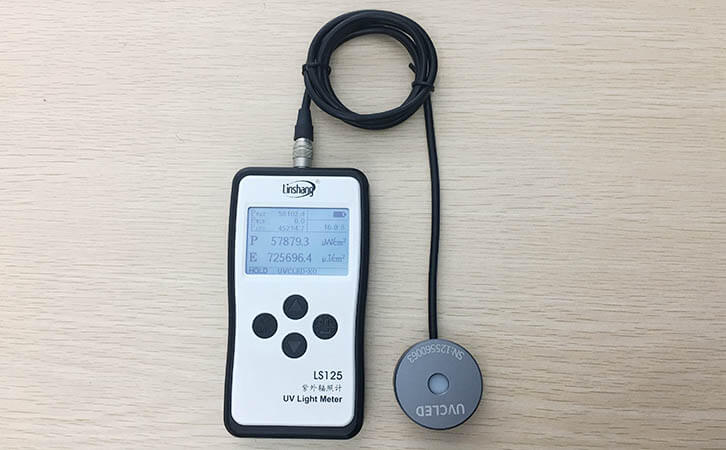UV Intensity Monitor | Lithographic Exposure and UV Intensity Detection
The lithographic exposure technology uses the principle of ultraviolet to process the localized diffusion of impurities in some substances in industrial production. For the current lithography exposure technology, extreme ultraviolet (EUV) is about to be applied. So what technology will the next generation of lithography use? Will there be shorter wavelengths? How to monitor the UV intensity to ensure that it will not affect production?
Lithographic exposure requires ultraviolet intensity monitoring using an UV intensity monitor. Judging from the current development prospects. The next generation of lithography technology is likely to be electron beam exposure and the ultimate resolution can reach 2, 3nm. In an optical lithography exposure system, the wavelength of the exposure radiation is a key parameter of the lithography process. Wavelength directly affects the energy intensity of ultraviolet light. In other words, it is necessary to achieve a good lithography process. An UV intensity monitor must be used to measure ultraviolet energy intensity.
Conventional lithographic exposure systems use ultraviolet light and diffraction phenomena can affect resolution. Even so, there is a tendency to continue to develop. Among them, if we want to reduce the elimination of other competitive products on the market, we must first pay attention to the use of UV intensity monitors in production to maintain a good ultraviolet irradiation intensity during photolithographic exposure. The current lithography exposure technology has an ultra-deep ultraviolet light system, but its system is complicated. Ultimately it is difficult to avoid the resolution limitation caused by interference diffraction. Therefore, it is necessary to use an UV intensity monitor to prevent the intensity of the ultraviolet light from being too high, which greatly affects the resolution.
Why is lithography exposure technology evolving and becoming more and more popular? Mainly because the defects in the traditional system do not meet the development needs of the modern market. There are several types of non-optical lithography exposure systems. X-ray exposure system: As far as commercial X-ray exposure equipment is concerned, the defect that can be tolerated is graphic distortion, but the more serious limitation is penumbra blur. Ion beam exposure system: There is a random space charge problem. The advantage is that no mask is required. Electron beam exposure system: There are electron scattering problems, the advantage is that no mask is needed. The resolution of X-ray lithography is not so high. X-ray lithography and ultraviolet lithography have different principles. X-rays cannot be refracted or have good reflective materials, so they cannot be focused. And the energy of X-ray is too high, it will generate secondary electrons, which limits the minimum resolution. So at present, the development of lithographic exposure technology still has an increasing interval. This process cannot be separated from the continuous detection of UV intensity monitors to ensure the normal control of ultraviolet energy, the normal progress of lithographic processes and product quality Final guarantee.
The good development of lithographic exposure technology requires a highly accurate UV intensity monitor to cooperate with it. The Linshang LS125+UVCLED probe UV intensity monitor has various detection functions. It can display a variety of data and can also display the change trend of intensity. It has reached the forefront of industry standards in functional applications and data accuracy. Keeping pace with the times in the development process, more in line with customer requirements. The development of lithographic exposure technology in the future will complement and intensify the UV intensity monitor.
